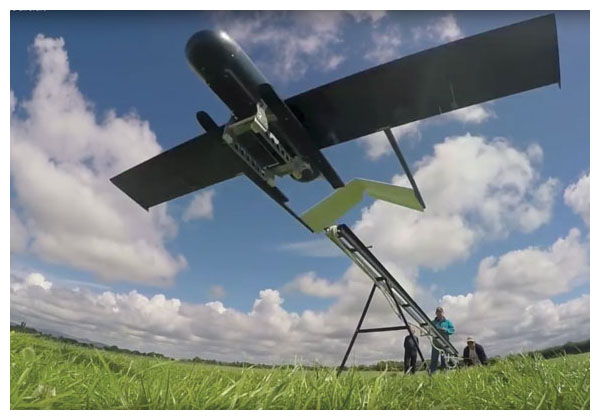Graphene Takes Flight
By Katie L. Burke
Single layers of carbon atoms give airplane wings a boost in strength and performance.
Single layers of carbon atoms give airplane wings a boost in strength and performance.

DOI: 10.1511/2016.123.326
A small, remote-controlled airplane with the world’s first graphene-coated wings demonstrated promising improved flight performance, intriguing the aerospace industry. Many of today’s airplanes are made of carbon-fiber composite, but putting graphene in the carbon-fiber coating made the plane’s wings stronger. The 3-meter-wide plane, named Prospero, had its first public flight in July at the Farnborough International Airshow in Hampshire, England. It has better impact resistance and is lighter and more drag resistant than a comparable craft with conventional carbon-fiber wings. “The biggest issue we’ve had was trying to get it to land, because it wanted to continue flying,” jokes aerospace engineer Billy Beggs from the University of Central Lancaster in England, who led the plane’s design, construction, and test flights.

Graphene, a nearly two-dimensional material made of a lattice of carbon atoms, is lauded for its strength, lightness, flexibility, and conductivity. The material’s strength meant that the wings of the plane needed to be coated with only one layer of graphene-infused carbon fiber rather than four or five layers of the conventional composite. “If you can build a stronger aircraft with less material, it’s lighter, and you’ll fly farther,” Beggs explains. In tests, the graphene-enhanced skin on the wings improved impact damage, a standard measurement of potential in-flight damage, by at least 60 percent. But that was not the only advantage of using a graphene coating. Beggs elaborates, “We then found out that, as we cured the carbon fiber, it cured faster because graphene is a thermal conductor. Environmental costs come down, because you’re not heating things as much.” This faster curing could mean civil airline manufacturers could increase production from four wing skins in a day to six, according to Beggs.
Further advantages of graphene’s relatively high electrical conductivity remain to be tested. Conductivity protects a plane from lightning strikes, and because carbon fiber has low conductivity, current airplane wings usually include a copper mesh that provides this protection. In theory, this copper mesh could be eliminated if graphene is used in the wing, making the plane even lighter and more fuel efficient. Graphene’s conductivity also could be used to electrically de-ice a plane, according to a study released earlier this year in ACS Applied Materials and Interfaces , thus eliminating the equipment costs associated with today’s chemical de-icing technology.
As part of a partnership with the University of Manchester’s National Graphene Institute in the United Kingdom, Beggs says he and his team are planning to design larger graphene-skinned test aircraft with the airline industry’s functional interests in mind. “Farnborough basically was a big shop window for us to show that the technology is flying,” Beggs says. Now that this proof of concept is off the ground, graphene use in aircraft is poised to gain altitude.— Katie L. Burke
Click "American Scientist" to access home page
American Scientist Comments and Discussion
To discuss our articles or comment on them, please share them and tag American Scientist on social media platforms. Here are links to our profiles on Twitter, Facebook, and LinkedIn.
If we re-share your post, we will moderate comments/discussion following our comments policy.